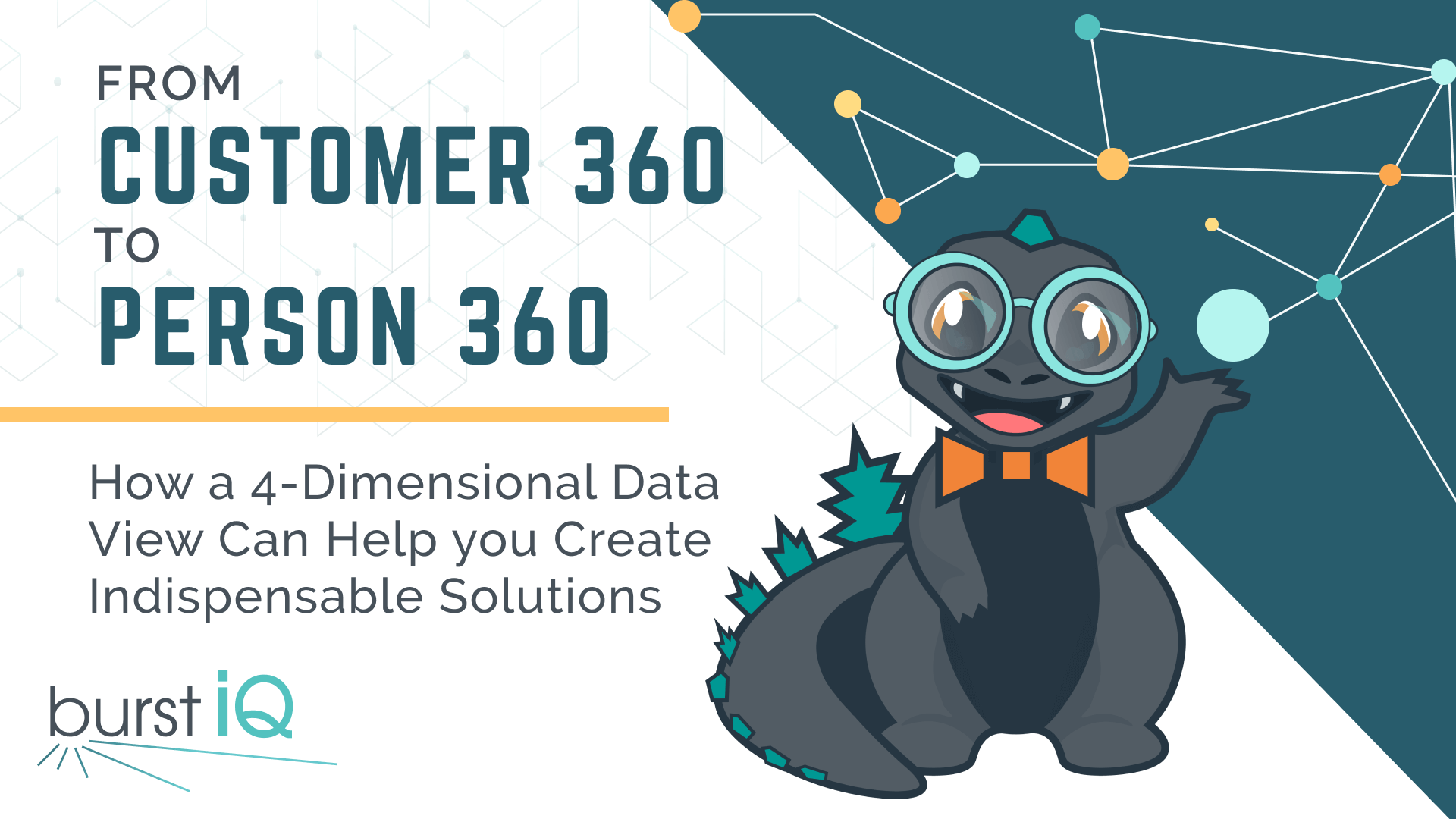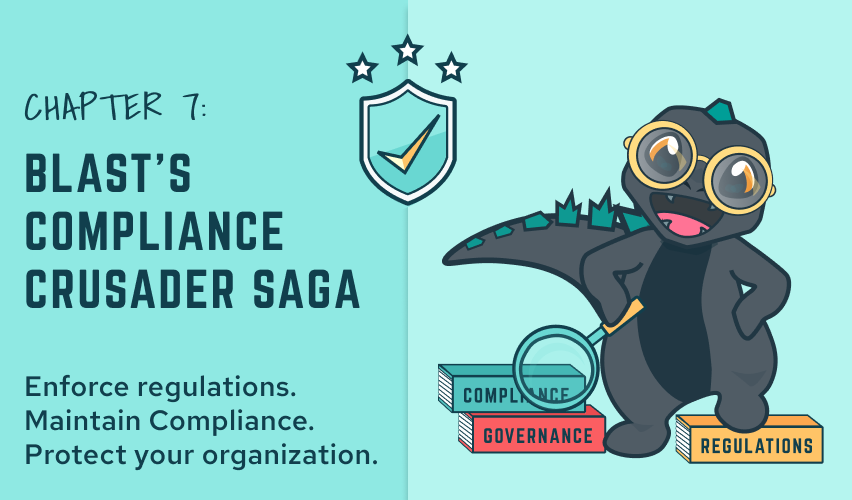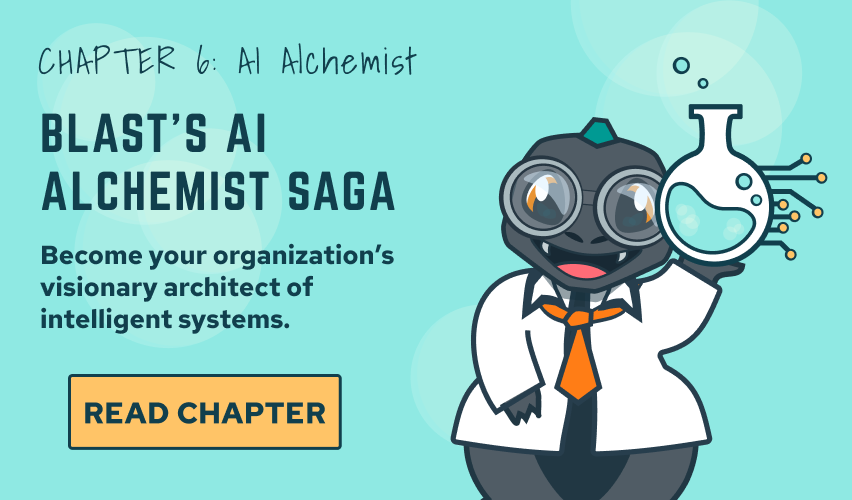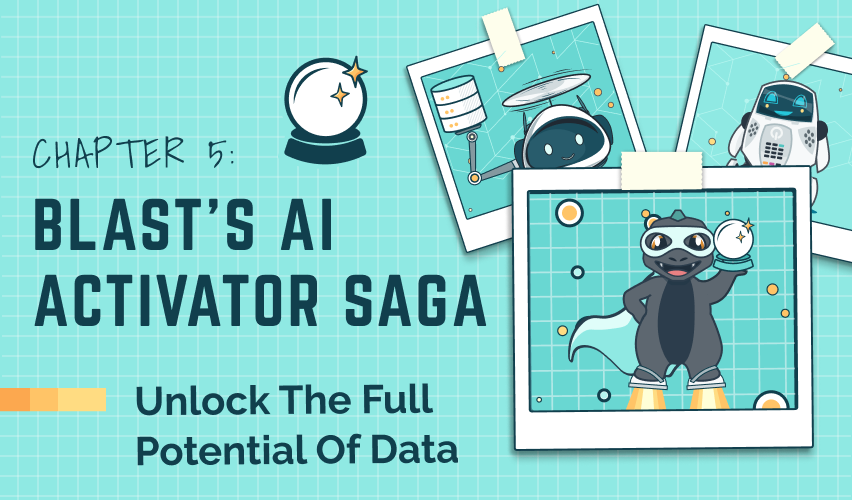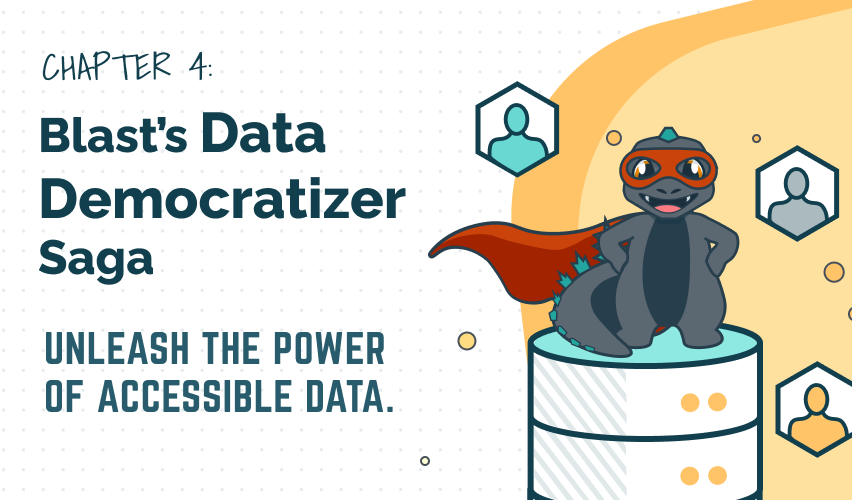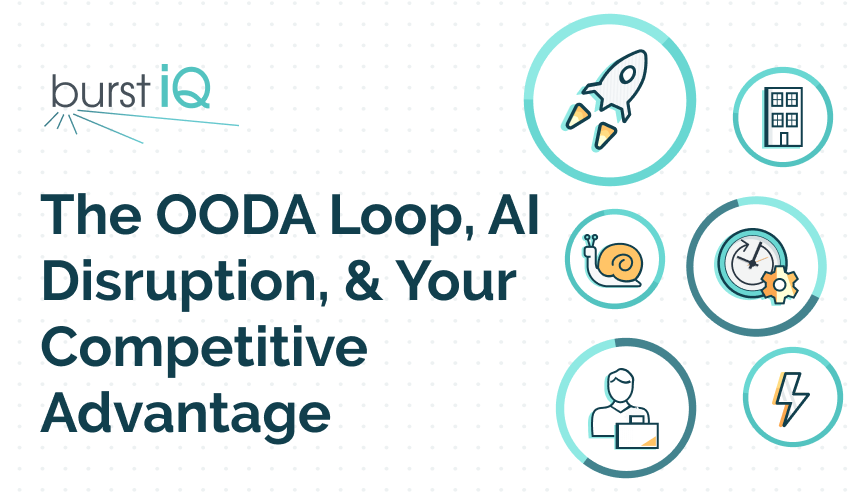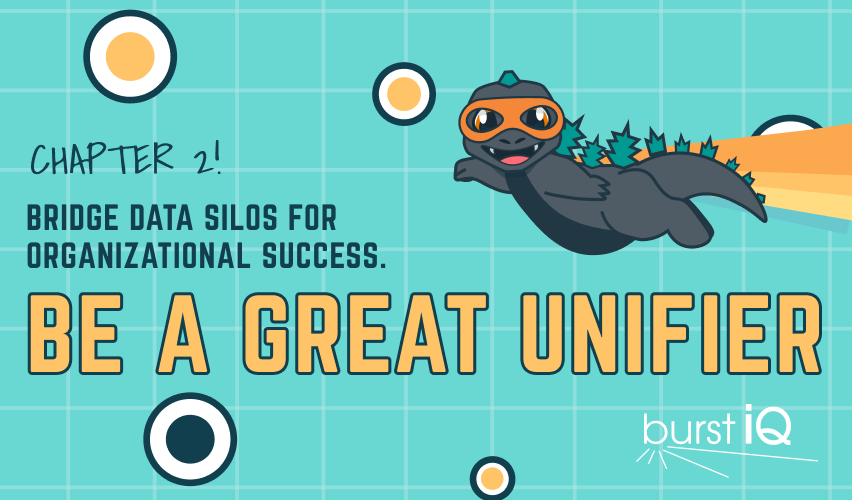Safeguarding
Intellectual Property
in an AI-Powered World
– Frank Ricotta, CEO & Founder, BurstIQ
As artificial intelligence continues its relentless march into nearly every industry and business function, crucial questions arise regarding protecting proprietary innovations, data, and other intellectual capital in an AI-driven landscape. If AI uses another person’s or company’s data to generate a new innovation, who owns the innovation – the owner of the source data, the creator of the AI, or the AI itself? With AI poised to become businesses’ most valuable asset and competitive differentiator, implementing robust IP protections is more critical than ever.
What does IP Protection entail with AI?
Confidential Data Protection
First and foremost, organizations must keep focus on implementing stringent policies, protocols, and security measures to prevent the leakage of sensitive internal data like customer information, financial records, strategic plans, research, and other trade secrets that power AI systems. As organizations become highly data-centric, vigilant data governance and traceable access controls are essential to lock down intellectual capital and maintain competitive edges or to track the source of a breach or leak in order to fortify and protect against future attacks.
Assigning Ownership Rights to AI Output
Second, with creative AI now composing music, generating art, designing products, writing software, and even inventing novel solutions, questions about legal rights and ownership of AI’s autonomous output arise. Who owns the IP rights if AI systems create songs, products, or processes with little to no human involvement? Should the AI platform itself enjoy legal protections? Does IP belong to the creators of the underlying algorithms or to the data owner or the AI user who prompts the output? Resolving these issues will grow in importance as AI’s creative prowess expands.
Tracking Attribution in Collaborative Efforts
Finally, collaborative human-AI projects introduce additional complexity in properly assigning ownership and quantifying individual contributions when breakthroughs emerge. Implementing immutable data provenance trails and contribution-tracking systems to follow IP lineage across these entangled partnerships is necessary. Doing so will help untangle knotty attribution questions when valuable innovations result.
Thankfully, there are promising methods to balance IP protections and responsible innovation. One such method is federated learning. Federated learning enables the use of sensitive data to train models without moving data off-site, averting confidentiality pitfalls.
- Encryption, access controls, and data masking preserve data security and privacy when leveraging cloud services. Privacy-preserving computation methods like homomorphic encryption, secure multi-party computation, and trusted execution environments allow sensitive data to be analyzed without exposing raw datasets.
- Powerful anonymization, differential privacy, and synthetic data generation techniques derive valuable insights from data while preventing reconstruction of sensitive personal information.
- Compartmentalization walls off proprietary algorithms in development, only combining components at the last stage before deployment to prevent IP leakage.
- Granular access policies on model usage, controls on external hosting, and model watermarking – essentially injecting data tracking into the data itself – help maintain control even once models are deployed.
- Formal verification methods mathematically prove code and model properties, preventing extraction of proprietary logic while still allowing external validation.
- Blockchain-based data provenance platforms create immutable asset ownership records and contributor identities across collaborations. Detailed lineage tracking on model development data, code, testing, and deployment provides audit trails demonstrating IP ownership.
- Stringent data governance policies, finely tuned access controls, and data usage auditing help regulate internal datasets, allowing AI to maintain confidentiality while permitting controlled analytics usage.
The LifeGraph® platform from BurstIQ provides a Web3/blockchain based secure and scalable data fabric supporting AI adoption, ensuring data integrity, governance, and security while maintaining regulatory compliance. Its distributed data structure safeguards IP, fostering trust and transparency in data transactions. Active metadata builds data confidence by offering insights into data’s origin, quality, and usage, promoting informed decisions. Ownership and consent controls, powered by smart contracts, protect IP in both data and data models, ensuring data usage is governed by explicit consent. Anonymization and tokenization techniques safeguard sensitive information, reducing the risk of IP theft. Additionally, LifeGraph incentivizes data sharing and monetization, helping companies expand their ecosystem and generate revenue while maintaining control over their intellectual property. It’s everything you need to protect your organization and accelerate your AI journey in a single platform.
If you’re ready to unlock AI’s immense innovation potential, it’s important to do so with care and foresight so you can rigorously safeguard your most valuable IP assets and data. As AI capabilities grow more profound, developing comprehensive IP protection policies, advanced security protocols, and attribution tracking systems will only become more critical.
Struggling with Where to Start with AI?
We’d love to talk to you about your company’s entry into the AI arena and schedule a collaboration session to share our expertise and ensure you’re set up for success from the very beginning. Our customers find this complimentary strategy session extremely useful for plotting their course for AI success. If you’re interested, connect with us to schedule your session.
About BurstIQ:
LifeGraph® by BurstIQ redefines the potential of organizational data. This next-generation data platform integrates advanced data management, privacy-enhancing technology, and knowledge graphs, transforming data into your organization’s ultimate superpower. Eliminate silos with a single, secure source of truth. LifeGraph reveals hidden connections within complex data sets, aligning with human and machine thinking for easier and more insightful analysis and powerful collaboration.
Organizations use LifeGraph to elevate legacy data lakes and warehouses into dynamic, secure, and person-centric data ecosystems that deliver value to everyone involved. With LifeGraph you can quickly address today’s problems and business initiatives, and ignite the spark of innovation to help your organization not only keep pace but set the tempo for the future.
To learn more about how LifeGraph can help you make data your superpower, please contact us here.
Safeguarding
Intellectual Property
in an AI-Powered World
– Frank Ricotta, CEO & Founder, BurstIQ
As artificial intelligence continues its relentless march into nearly every industry and business function, crucial questions arise regarding protecting proprietary innovations, data, and other intellectual capital in an AI-driven landscape. If AI uses another person’s or company’s data to generate a new innovation, who owns the innovation – the owner of the source data, the creator of the AI, or the AI itself? With AI poised to become businesses’ most valuable asset and competitive differentiator, implementing robust IP protections is more critical than ever.
What does IP Protection entail with AI?
Confidential Data Protection
First and foremost, organizations must keep focus on implementing stringent policies, protocols, and security measures to prevent the leakage of sensitive internal data like customer information, financial records, strategic plans, research, and other trade secrets that power AI systems. As organizations become highly data-centric, vigilant data governance and traceable access controls are essential to lock down intellectual capital and maintain competitive edges or to track the source of a breach or leak in order to fortify and protect against future attacks.
Assigning Ownership Rights to AI Output
Second, with creative AI now composing music, generating art, designing products, writing software, and even inventing novel solutions, questions about legal rights and ownership of AI’s autonomous output arise. Who owns the IP rights if AI systems create songs, products, or processes with little to no human involvement? Should the AI platform itself enjoy legal protections? Does IP belong to the creators of the underlying algorithms or to the data owner or the AI user who prompts the output? Resolving these issues will grow in importance as AI’s creative prowess expands.
Tracking Attribution in Collaborative Efforts
Finally, collaborative human-AI projects introduce additional complexity in properly assigning ownership and quantifying individual contributions when breakthroughs emerge. Implementing immutable data provenance trails and contribution-tracking systems to follow IP lineage across these entangled partnerships is necessary. Doing so will help untangle knotty attribution questions when valuable innovations result.
Thankfully, there are promising methods to balance IP protections and responsible innovation. One such method is federated learning. Federated learning enables the use of sensitive data to train models without moving data off-site, averting confidentiality pitfalls.
- Encryption, access controls, and data masking preserve data security and privacy when leveraging cloud services. Privacy-preserving computation methods like homomorphic encryption, secure multi-party computation, and trusted execution environments allow sensitive data to be analyzed without exposing raw datasets.
- Powerful anonymization, differential privacy, and synthetic data generation techniques derive valuable insights from data while preventing reconstruction of sensitive personal information.
- Compartmentalization walls off proprietary algorithms in development, only combining components at the last stage before deployment to prevent IP leakage.
- Granular access policies on model usage, controls on external hosting, and model watermarking – essentially injecting data tracking into the data itself – help maintain control even once models are deployed.
- Formal verification methods mathematically prove code and model properties, preventing extraction of proprietary logic while still allowing external validation.
- Blockchain-based data provenance platforms create immutable asset ownership records and contributor identities across collaborations. Detailed lineage tracking on model development data, code, testing, and deployment provides audit trails demonstrating IP ownership.
- Stringent data governance policies, finely tuned access controls, and data usage auditing help regulate internal datasets, allowing AI to maintain confidentiality while permitting controlled analytics usage.
The LifeGraph® platform from BurstIQ provides a Web3/blockchain based secure and scalable data fabric supporting AI adoption, ensuring data integrity, governance, and security while maintaining regulatory compliance. Its distributed data structure safeguards IP, fostering trust and transparency in data transactions. Active metadata builds data confidence by offering insights into data’s origin, quality, and usage, promoting informed decisions. Ownership and consent controls, powered by smart contracts, protect IP in both data and data models, ensuring data usage is governed by explicit consent. Anonymization and tokenization techniques safeguard sensitive information, reducing the risk of IP theft. Additionally, LifeGraph incentivizes data sharing and monetization, helping companies expand their ecosystem and generate revenue while maintaining control over their intellectual property. It’s everything you need to protect your organization and accelerate your AI journey in a single platform.
If you’re ready to unlock AI’s immense innovation potential, it’s important to do so with care and foresight so you can rigorously safeguard your most valuable IP assets and data. As AI capabilities grow more profound, developing comprehensive IP protection policies, advanced security protocols, and attribution tracking systems will only become more critical.
Struggling with Where to Start with AI?
We’d love to talk to you about your company’s entry into the AI arena and schedule a collaboration session to share our expertise and ensure you’re set up for success from the very beginning. Our customers find this complimentary strategy session extremely useful for plotting their course for AI success. If you’re interested, connect with us to schedule your session.
About BurstIQ:
LifeGraph® by BurstIQ redefines the potential of organizational data. This next-generation data platform integrates advanced data management, privacy-enhancing technology, and knowledge graphs, transforming data into your organization’s ultimate superpower. Eliminate silos with a single, secure source of truth. LifeGraph reveals hidden connections within complex data sets, aligning with human and machine thinking for easier and more insightful analysis and powerful collaboration.
Organizations use LifeGraph to elevate legacy data lakes and warehouses into dynamic, secure, and person-centric data ecosystems that deliver value to everyone involved. With LifeGraph you can quickly address today’s problems and business initiatives, and ignite the spark of innovation to help your organization not only keep pace but set the tempo for the future.
To learn more about how LifeGraph can help you make data your superpower, please contact us here.
Safeguarding
Intellectual Property
in an AI-Powered World
– Frank Ricotta, CEO & Founder, BurstIQ
As artificial intelligence continues its relentless march into nearly every industry and business function, crucial questions arise regarding protecting proprietary innovations, data, and other intellectual capital in an AI-driven landscape. If AI uses another person’s or company’s data to generate a new innovation, who owns the innovation – the owner of the source data, the creator of the AI, or the AI itself? With AI poised to become businesses’ most valuable asset and competitive differentiator, implementing robust IP protections is more critical than ever.
What does IP Protection entail with AI?
Confidential Data Protection
First and foremost, organizations must keep focus on implementing stringent policies, protocols, and security measures to prevent the leakage of sensitive internal data like customer information, financial records, strategic plans, research, and other trade secrets that power AI systems. As organizations become highly data-centric, vigilant data governance and traceable access controls are essential to lock down intellectual capital and maintain competitive edges or to track the source of a breach or leak in order to fortify and protect against future attacks.
Assigning Ownership Rights to AI Output
Second, with creative AI now composing music, generating art, designing products, writing software, and even inventing novel solutions, questions about legal rights and ownership of AI’s autonomous output arise. Who owns the IP rights if AI systems create songs, products, or processes with little to no human involvement? Should the AI platform itself enjoy legal protections? Does IP belong to the creators of the underlying algorithms or to the data owner or the AI user who prompts the output? Resolving these issues will grow in importance as AI’s creative prowess expands.
Tracking Attribution in Collaborative Efforts
Finally, collaborative human-AI projects introduce additional complexity in properly assigning ownership and quantifying individual contributions when breakthroughs emerge. Implementing immutable data provenance trails and contribution-tracking systems to follow IP lineage across these entangled partnerships is necessary. Doing so will help untangle knotty attribution questions when valuable innovations result.
Thankfully, there are promising methods to balance IP protections and responsible innovation. One such method is federated learning. Federated learning enables the use of sensitive data to train models without moving data off-site, averting confidentiality pitfalls.
- Encryption, access controls, and data masking preserve data security and privacy when leveraging cloud services. Privacy-preserving computation methods like homomorphic encryption, secure multi-party computation, and trusted execution environments allow sensitive data to be analyzed without exposing raw datasets.
- Powerful anonymization, differential privacy, and synthetic data generation techniques derive valuable insights from data while preventing reconstruction of sensitive personal information.
- Compartmentalization walls off proprietary algorithms in development, only combining components at the last stage before deployment to prevent IP leakage.
- Granular access policies on model usage, controls on external hosting, and model watermarking – essentially injecting data tracking into the data itself – help maintain control even once models are deployed.
- Formal verification methods mathematically prove code and model properties, preventing extraction of proprietary logic while still allowing external validation.
- Blockchain-based data provenance platforms create immutable asset ownership records and contributor identities across collaborations. Detailed lineage tracking on model development data, code, testing, and deployment provides audit trails demonstrating IP ownership.
- Stringent data governance policies, finely tuned access controls, and data usage auditing help regulate internal datasets, allowing AI to maintain confidentiality while permitting controlled analytics usage.
The LifeGraph® platform from BurstIQ provides a Web3/blockchain based secure and scalable data fabric supporting AI adoption, ensuring data integrity, governance, and security while maintaining regulatory compliance. Its distributed data structure safeguards IP, fostering trust and transparency in data transactions. Active metadata builds data confidence by offering insights into data’s origin, quality, and usage, promoting informed decisions. Ownership and consent controls, powered by smart contracts, protect IP in both data and data models, ensuring data usage is governed by explicit consent. Anonymization and tokenization techniques safeguard sensitive information, reducing the risk of IP theft. Additionally, LifeGraph incentivizes data sharing and monetization, helping companies expand their ecosystem and generate revenue while maintaining control over their intellectual property. It’s everything you need to protect your organization and accelerate your AI journey in a single platform.
If you’re ready to unlock AI’s immense innovation potential, it’s important to do so with care and foresight so you can rigorously safeguard your most valuable IP assets and data. As AI capabilities grow more profound, developing comprehensive IP protection policies, advanced security protocols, and attribution tracking systems will only become more critical.
Struggling with Where to Start with AI?
We’d love to talk to you about your company’s entry into the AI arena and schedule a collaboration session to share our expertise and ensure you’re set up for success from the very beginning. Our customers find this complimentary strategy session extremely useful for plotting their course for AI success. If you’re interested, connect with us to schedule your session.
About BurstIQ:
LifeGraph® by BurstIQ redefines the potential of organizational data. This next-generation data platform integrates advanced data management, privacy-enhancing technology, and knowledge graphs, transforming data into your organization’s ultimate superpower. Eliminate silos with a single, secure source of truth. LifeGraph reveals hidden connections within complex data sets, aligning with human and machine thinking for easier and more insightful analysis and powerful collaboration.
Organizations use LifeGraph to elevate legacy data lakes and warehouses into dynamic, secure, and person-centric data ecosystems that deliver value to everyone involved. With LifeGraph you can quickly address today’s problems and business initiatives, and ignite the spark of innovation to help your organization not only keep pace but set the tempo for the future.
To learn more about how LifeGraph can help you make data your superpower, please contact us here.
